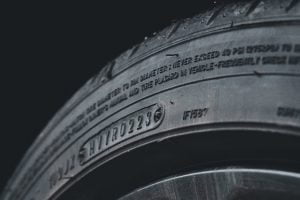The Importance of Wheel Alignment


The Importance of Wheel Alignment


Introduction
Wheel alignment is a critical aspect of vehicle maintenance that is often overlooked by many car owners. It refers to the proper positioning and adjustment of the wheels in relation to each other and the road surface. When your wheels are aligned correctly, it ensures that they are pointing in the right direction, maximizing tire performance, fuel efficiency, and overall safety. In this article, we will delve into the importance of wheel alignment and the steps involved in the alignment process.
Why is Wheel Alignment Important?
1. Extended Tire Life
One of the primary benefits of wheel alignment is that it helps to extend the life of your tires. When your wheels are misaligned, it causes uneven tire wear. Some areas of the tires may wear out faster than others, leading to premature tire replacement. Proper alignment ensures that the tires wear evenly, which in turn helps to maximize their lifespan, saving you money in the long run.
2. Improved Fuel Efficiency
Misaligned wheels can create additional resistance between the tires and the road surface. This increased resistance forces the engine to work harder to move the vehicle, resulting in reduced fuel efficiency. By aligning the wheels, you can reduce rolling resistance, thereby improving gas mileage and saving money on fuel costs.
3. Enhanced Handling and Safety
When your wheels are properly aligned, your vehicle handles better and is safer to drive. Misaligned wheels can cause your car to pull to one side, making it difficult to keep it in a straight line. This can be especially dangerous when driving at high speeds or in hazardous road conditions. Proper alignment ensures that your vehicle stays on track, providing better control and reducing the risk of accidents.
4. Lower Maintenance Costs
Maintaining proper wheel alignment can also save you money on other vehicle maintenance expenses. Misaligned wheels can put additional stress on various components of the suspension system, such as the shocks and struts. Over time, this can lead to premature wear and tear, requiring costly repairs. By aligning your wheels, you reduce the strain on these components, extending their lifespan and reducing the need for frequent repairs.
Signs That Your Wheels Need Alignment
Before we delve into the wheel alignment process, it’s essential to recognize the signs that indicate your wheels are misaligned. Look out for the following symptoms:
1. Uneven Tire Wear
Inspect your tires regularly and pay attention to any uneven wear patterns. If you notice excessive wear on one side of the tire or the middle, it could be a sign of misalignment.
2. Vehicle Pulling to One Side
When driving on a straight, flat road, if your vehicle tends to pull to the left or right, even when you’re not actively steering, it’s likely a sign of wheel misalignment.
3. Crooked Steering Wheel
If your steering wheel is off-center and not aligned properly when driving straight, it’s an indicator that your wheels need alignment.
4. Vibrations in the Steering Wheel
Misaligned wheels can cause vibrations in the steering wheel, especially at higher speeds. If you feel these vibrations, it’s essential to get your alignment checked.
The Wheel Alignment Process
Wheel alignment is best performed by a professional mechanic or at a specialized auto shop. The process involves several steps:
1. Pre-Alignment Inspection
The first step is a comprehensive inspection of the vehicle’s suspension system, tires, and steering components. The technician will check for any signs of damage or worn-out parts that could affect the alignment process.
2. Camber Adjustment
Camber refers to the inward or outward tilt of the wheels when viewed from the front of the vehicle. The technician will adjust the camber angles to ensure they are within the manufacturer’s specifications. Proper camber alignment helps maintain optimal tire contact with the road surface.
3. Toe Adjustment
Toe alignment refers to the angle at which the tires point in or out when viewed from above. Incorrect toe alignment can cause excessive tire wear and steering instability. The technician will adjust the toe angles to ensure they are set correctly, promoting even tire wear and improved handling.
4. Caster Adjustment
Caster refers to the forward or backward tilt of the steering axis when viewed from the side of the vehicle. It helps with stability and steering control. The technician will adjust the caster angles as necessary to ensure optimal performance.
5. Post-Alignment Testing
After the adjustments are made, the technician will perform a final test drive to ensure the vehicle handles correctly and the alignment is properly set. This step ensures that all the adjustments have been accurately made, and any potential issues are addressed before returning the vehicle to the owner.
Conclusion
Maintaining proper wheel alignment is crucial for your vehicle’s performance, safety, and longevity. By aligning your wheels, you can extend tire life, improve fuel efficiency, enhance handling and safety, and reduce overall maintenance costs. Regular inspections and addressing misalignment promptly can save you money in the long run and provide a smoother, safer driving experience. Don’t overlook the importance of wheel alignment in your vehicle maintenance routine, and consult a professional if you notice any signs of misalignment.








